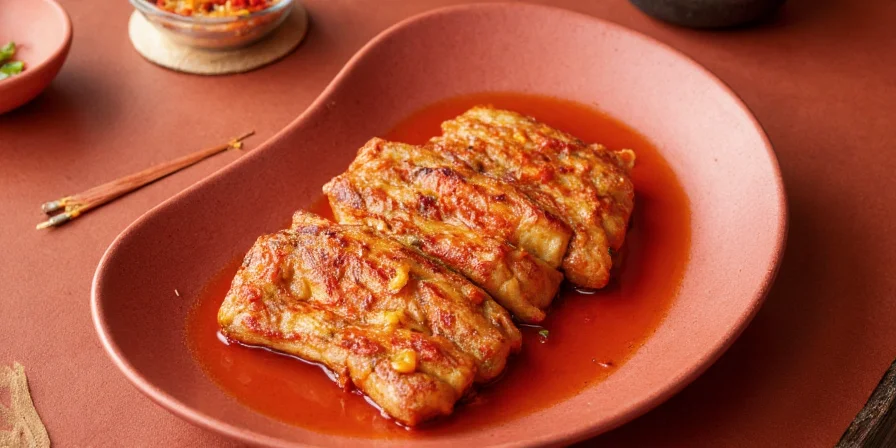10 Chicken Soup Seasoning Secrets That Will Make Your Bowl the Talk of the Town
Introduction: Why Your Chicken Soup Might Be Missing Its Magic Ingredient
If your chicken soup tastes good but just... well, "meh," it might not be your fault. The culprit? Yep, you guessed it — your seasoning game is probably weaker than a day-old broth.
In this blog post, we’ll take a deep dive into the world of chicken soup seasonings, exploring how to elevate your pot from basic to brilliant using both classic and creative spice combinations. Plus, we’ve got tips, tricks, and a few surprises up our sleeve!
What Makes Chicken Soup Seasonings So Special?
Chicken soup isn’t just comfort food; it’s often a culinary canvas waiting for bold or delicate brushstrokes of flavor. Here's why seasoning matters more than you think:
- Depth of Flavor: Properly layered seasonings add complexity and warmth.
- Healing Properties: Many herbs and spices used in soup seasonings have anti-inflammatory and immune-boosting benefits.
- Cultural Nuance: Different global cuisines bring unique blends that reflect regional flavors.
Top 10 Chicken Soup Seasoning Hacks You Need to Try
1. Don't Skimp on Salt
Salt is the ultimate flavor amplifier. But not all salts are created equal! Kosher salt tends to give the best balance without being overly harsh.

2. Garlic & Onions — The Dynamic Duet
Fresh garlic and onions form the aromatic foundation of most great soups. Use fresh, avoid pre-minced when possible.
| Type | Best For |
|---|---|
| Garlic | Rich, savory undertones |
| Yellow Onion | Sweet and balanced base |
| Shallot | Milder, more refined flavor |
3. Bay Leaves: Small but Mighty
Never underestimate a bay leaf! This unassuming herb infuses broths with subtle earthy depth. Always remove before serving, though!

4. Fresh vs. Dried Herbs: Know the Difference
When it comes to herbs, timing and type matter. Check out this handy comparison:
| Fresh Herbs | Dried Herbs | |
|---|---|---|
| Flavor Profile | Vibrant, bright, complex | Concentrated, earthy, robust |
| Usage Tip | Add near end of cooking | Add early to infuse broth |
| Examples | Parsley, cilantro, dill | Thyme, oregano, marjoram |
5. Black Pepper ≠ Just for Looks
A dash of black pepper doesn’t just add heat — it also enhances other flavors. Whole peppercorns simmered in broth release a mellower, richer heat than ground pepper.

6. Celery Seed: The Underdog Hero
Not many home cooks know about celery seed, but this tiny powerhouse brings an earthy, nutty flavor that’s perfect for broths.
7. Caraway Seeds: A European Touch
Common in German and Eastern European soups, caraway seeds offer a slightly licorice-like note that pairs beautifully with root vegetables.

8. Turmeric: Color and Comfort in One
This golden spice not only adds vibrant color but also anti-inflammatory properties. It plays well with ginger and cumin for a cozy twist.
9. Star Anise: For a Touch of Asia
Want to give your soup an exotic flair? Add a single star anise pod for a licorice-scented richness, commonly found in Vietnamese pho broths.

10. Lemon Zest: The Surprise Brightness Boost
Before serving, a touch of lemon zest can cut through rich flavors and make everything pop. Don’t forget to add it at the very end!
Bonus Tips: How to Store and Reuse Seasonings Like a Pro
- Label Everything: Date your jars so you don’t use stale spices by accident.
- Use Spice Jars with Shaker Tops: No more spills and easier portion control while cooking.
- Revive Old Spices: Toast them lightly in a dry pan to revive their potency.
Conclusion: Your Chicken Soup Deserves More Than Boring Seasoning
Your journey from bland to brilliant starts with understanding the role each spice plays. Whether you're sticking to traditional combos or experimenting with global flavors, there’s no reason your chicken soup should ever taste flat again.
Now go forth, season fearlessly, and let your kitchen smell like a five-star restaurant. Because seriously — who needs takeout when your soup smells this good?
FAQs: Common Questions About Chicken Soup Seasonings
Q: Can I reuse herbs after simmering them in broth?
A: It’s generally not recommended as they lose most of their flavor. Compost or discard after use.
Q: Should I toast my spices before adding them to soup?
A: Some spices benefit from light toasting — especially seeds like coriander, cumin, and caraway. Toast in a dry skillet over medium heat for 1–2 minutes until fragrant.
Q: What’s the difference between chicken bouillon and seasoning?
A: Bouillon is a concentrated form of seasoned broth, often in cube or powder form. Seasoning refers to the individual spices and herbs added during cooking.
Q: Can I make my own chicken soup seasoning blend?
A: Absolutely! Combine onion powder, garlic powder, dried thyme, parsley, celery salt, and black pepper in a jar for a custom mix. Adjust to taste!











 浙公网安备
33010002000092号
浙公网安备
33010002000092号 浙B2-20120091-4
浙B2-20120091-4